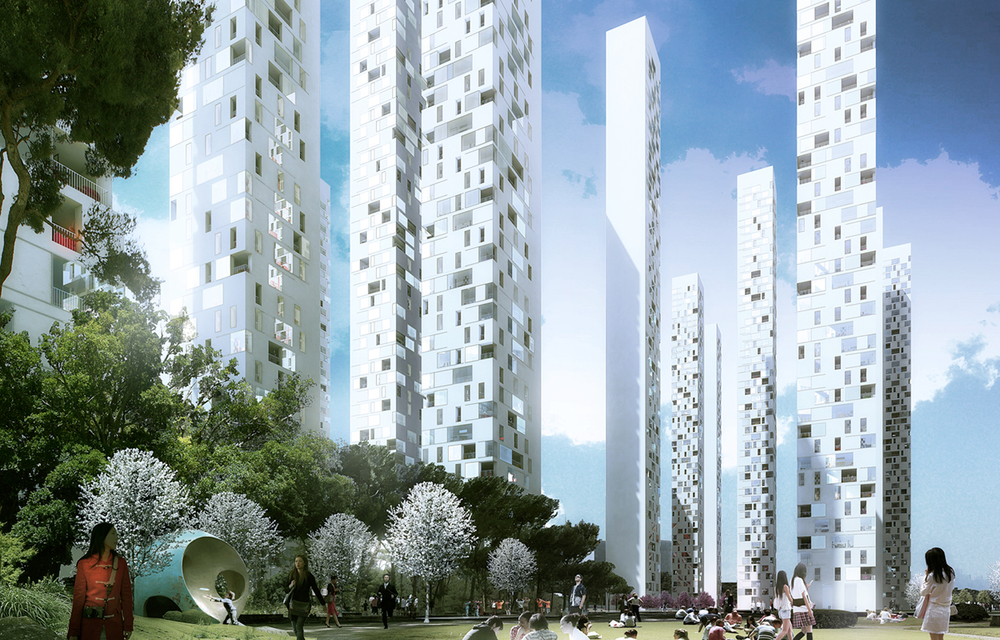Redefining Compact Residential Design Methodologies for Hong Kong
|
Statement The thesis aims to redefine the typical design approach of highly repetitive housing estates in Hong Kong, with considerations towards the emerging social issues of greater demands for compact units and a lack of land for developing large-scale housing estates emerging in the last decade. What Due to an increased gap between affordability of housing and the average income of Hong Kong citizens, we see the phenomenon where many illegally situate their residents within sub-divided housing apartments or in cheaper factory buildings which are illegal to be served as residential apartments. With such urgent and critical housing issues emerging from a series of complex social, economic and political conflicts, Hong Kong developers strive to increase their revenue through compact housing designs, in order to facilitate many who cannot afford to buy or rent in larger living units. The practice of designing highly compact housing in Hong Kong only emerged in the last decade, and we see newly built compact housing today fail to provide quality living space for people. The failure of compact housing in Hong Kong is clear when architect Gary Chang designed furniture in a 300 square feet apartment capable of transforming it into 24 rooms of different functions. The increasing popularity of retractable storage and furniture such as ones designed by the famous Japanese company Muji, as well as many other cases of transforming compact apartments into more livable spaces, are all evident efforts to solve the problematic design of small and compressed residential units. The thesis strives to bring forward the idea of compact living spaces and propose methods of generating architecture from compact apartments in a larger scale, by questioning how will these refined apartments come together as a whole architecture. It is inadequate for one to simply consider how single apartments can be redesigned or manipulated such that living spaces within itself will be improved. As such, ideas from architects like Gary Chang shall be extended not just towards the interior space of new compact units to be built, but also architecture as a whole.
Hong Kong Micro Apartment, Gary Chang Why It is crucial at this point of time to consider how compact units can be erected architecturally with urgent housing issues in Hong Kong. The residential tower typology in Hong Kong hasn’t evolved much in the last few decades, since many housing estates are a result of adapting, copying and pasting older designs through highly automated processes in the computer. Ironically, housing solutions are highly diverse when they are left for development by private sectors for many places in the world. Today, we see a beginning of change within the design culture of residential units in Hong Kong as a result of shifting demands. Yet, the automated and repetitive methodology of compiling these units together to generate a larger-scaled architecture remains. The thesis would like to challenge and criticize such method by proposing how qualitative spatial experiences and interactions can be achieved through alternative methods of designing compact units and architecture. How The primary principle for deriving a new set of methods for designing compact living spaces would be the consideration of existing solutions and how they differ towards the specificities as demanded in Hong Kong. As such, the first step of this project would be to look closely at a series of compact housing solutions within and outside Hong Kong in both the unit and tower scale. These case studies will become blueprints and loose guides towards the extraction of design ideas and application into the specific contexts of Hong Kong. By comparing the spatial organization principles in worldwide cases of compact living spaces towards those in Hong Kong, one can carefully consider a new design methodology by adapting and pulling multiple design aspects into the current repetitive design solution for compact residential architecture in Hong Kong.
Compact Parisian Studio
Songdo Landmark City RELEVANT CASE STUDIES Hong Kong Micro Apartment, Hong Kong, Gary Chang House of Furniture, House Vision Exhibition Tokyo, Shigeru Ban & Muji Compact Parisian Studio, Paris, Betillon and Dorval-bory Habitat 67, Montreal, Moshe Safdie Songdo Landmark City, Korea, REX Architects |


